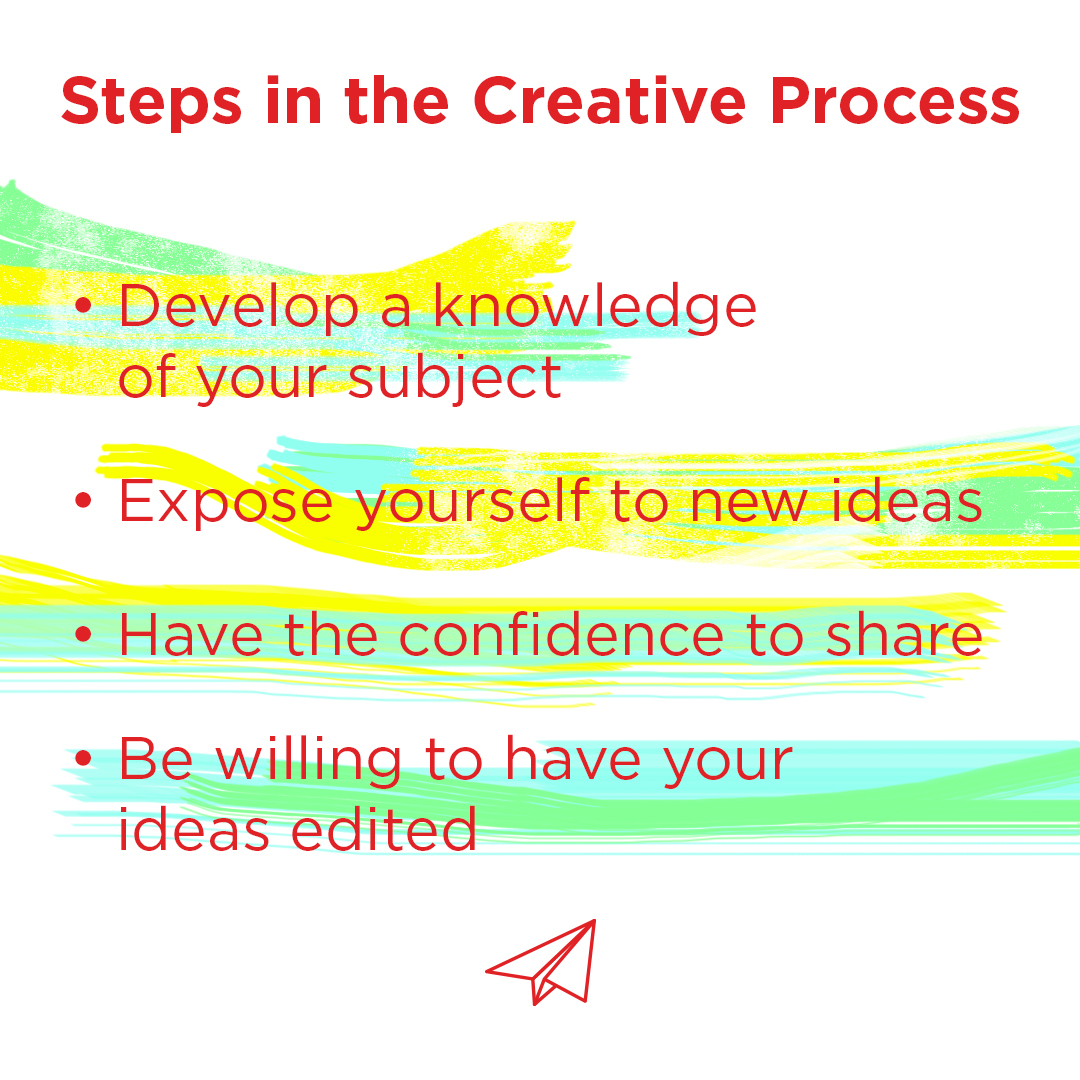Creativity. Who better to speak to this topic than a Creative Director, right? The title sets the stage for a person with imagination, a willingness to dream and a lack of fear. A Creative Director is expected to offer unique solutions to marketing challenges, to think outside the box and to search for a disruptive way to tell the story of any product.
But what about you — are you expected to be creative in your job? Do you see yourself in that way? Could you add “Creative” to the front of your job description?
I hear you — you can’t draw, right? And the piano lessons you took in sixth grade never developed your skill level to that of a virtuoso. So, did a few failed attempts at tackling a creative craft leave you with the assumption that you’re not creative? Hmmmm. Let’s unlock the mystery of creativity — and I guarantee you will find the key to your own imagination.
Most of us are aware that creativity flows from the right side of our brain — the side that controls emotion, color recognition and imagination. But truly effective creative thinkers utilize both sides of the brain. They must tap into the logical, linear-thinking side while still opening their minds to imagination.
A quote from world-renowned theoretical physicist and well-known creative thinker Albert Einstein simplifies the concept: “Creativity is intelligence having fun.”
In my recent study of this topic, I was struck by the realization that every person is born with a strong sense of imagination. Remember when you were a kid and the world was a place of fairy tales and Santa Claus? Where a few blankets thrown over the dining room table turned the whole room into a camping adventure? So what happened? Did you forget to have fun? Are you afraid that — because you are not an artist or lack the musical prowess of Adele — you should not jump out there and offer a creative solution to a challenge?
Well, consider this — creativity, like many things, involves a process. Creative ideas are developed via a series of informational building blocks: knowledge, research, facts, visuals and details. Folks are not just handed the creative card at birth, they must work to develop their skills. Pablo Picasso said, “Learn the rules like a pro, so you can break them like an artist.” Picasso studied at the feet of his artist father, then later focused on the work of the masters in school. While it’s obvious he had talent at a young age, he was not born painting in the cubist style he became famous for. He developed it with training, knowledge and exposure to a wide variety of styles over the years.
But you’d expect as much from Picasso. Let’s pull inspiration from a creative strategist —a military figure whose creative mindset guided him toward his greatest victory. Confederate Gen. Robert E. Lee at the Battle of Chancellorsville divided his outnumbered army in two, surprising the Union troops. When opposing Gen. Joseph Hooker pulled his troops back into a defensive position, Lee divided his group once again and sent a battalion, led by Gen. Stonewall Jackson, to the Union’s flank. The end result was a battle that might never have been won by the Confederates without a creative battle plan. Creativity is not just a tool of the artist.
Exposure to new ideas feeds creativity. Sir Joshua Reynolds, an 18th century British portrait painter, said, “Invention, strictly speaking, is little more than a new combination of those images which have been previously gathered and deposited in the memory; nothing can come from nothing.” When you feed your mind with new ideas, new images and new concepts, you expand your basket of experiences to draw from.
Now, the next step is a big one — the step that holds many of us at bay. It’s sharing your idea. This step requires confidence as well as a willingness to open your idea up for discussion and improvement. You may have the nugget of an idea that sparks someone else to move it further. Be willing to share, but also open to editing. And remember, American poet John Sinclair said it best: “Failure is a bruise, not a tattoo.”
That’s the process, the ticket to proudly adding the term “Creative” in front of your job description. So, the next time you are faced with a challenge in your job, look for an inspirational solution — and ask yourself whether you have followed these steps:
• Develop a knowledge of your subject
• Expose yourself to new ideas
• Have the confidence to share
• Be willing to have your ideas edited

… Creativity is destined to follow.
From one Creative Director to a Creative________, I know you can do it!
